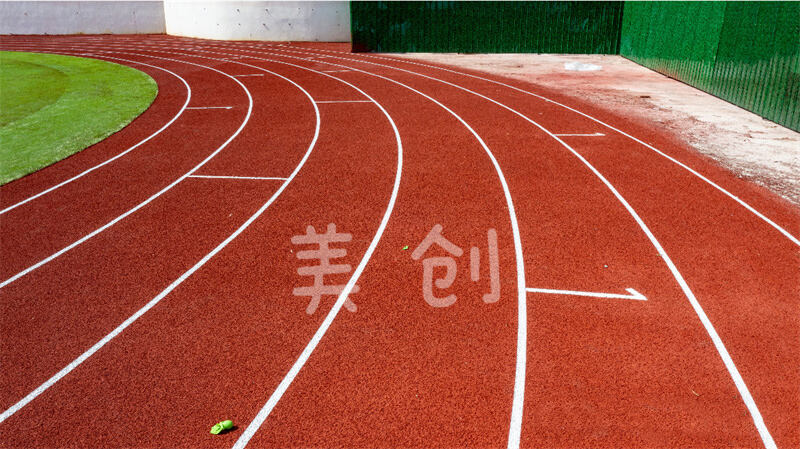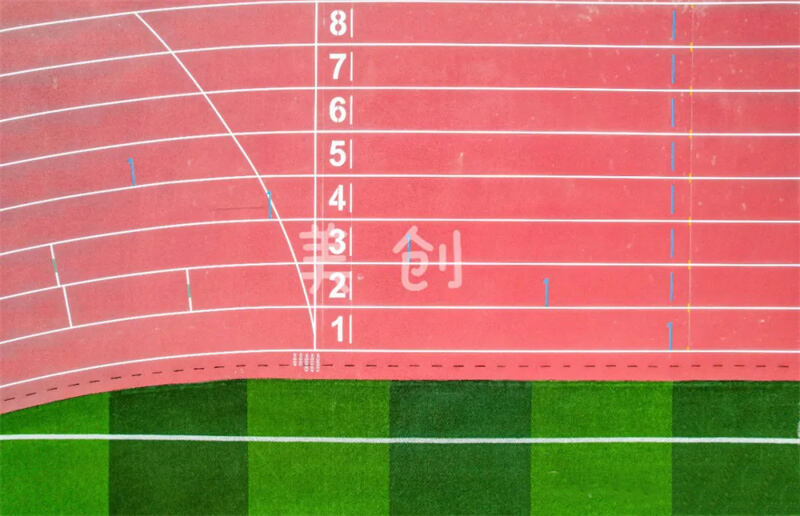How to distinguish the good from the bad? In-depth Analysis of the Environmental Performance of Plastic Track Materials
In the face of a wide variety of materials and uneven quotations in the market, how can one develop a pair of "sharp eyes" to distinguish the good from the bad and ensure the health and safety of athletes? This article will provide you with an in-depth analysis of the key points of the environmental performance of plastic running tracks.
The core of environmental protection: Identifying the "culprits" of harmful substances
The environmental protection issues of plastic running tracks mainly stem from the harmful chemicals contained in some substandard raw materials. To distinguish the good from the bad, we first need to understand what we need to guard against:
1. Soluble heavy metals (lead, cadmium, chromium, mercury)
mainly come from inferior pigments. These heavy metals, when accumulated in the human body, can cause serious damage to the nervous system, hematopoietic system, etc., and are especially harmful to children.
2. TDI (toluene diisocyanate)
It is an important raw material for polyurethane plastic track glue (prepolymer). However, free TDI has a strong pungent smell and is harmful to the respiratory tract and mucous membranes. It is also one of the main culprits of the early "toxic running tracks". At present, the national standards have vigorously promoted the use of safer MDI (diphenylmethane diisocyanate) as an alternative.
3. Benzene series substances (benzene, toluene, xylene)
As solvents, they have strong volatility and a pungent smell. They are recognized as carcinogens and can damage the central nervous system and hematopoietic function.
4. Chlorinated paraffins, MOCA (MOCA) and other plasticizers or crosslinking agents
Some short-chain chlorinated paraffins and MoCA are considered to have carcinogenic risks, but they may be used in some low-cost formulations.
5. Total amount of VOCs (Volatile Organic compounds)
Many of the above-mentioned harmful substances fall within the category of VOCs. The total amount of VOCs is a comprehensive indicator for measuring the overall environmental friendliness of materials, and the lower the value, the better.

Four-step identification method to eliminate risks from the source
1. Smell the odor - the most direct initial judgment
• High-quality running tracks: During the construction process and after completion, there may be a slight material smell, but it will basically dissipate after ventilation for a period of time (usually 7-14 days). There will be no discomfort such as pungent smell, dizziness or nausea when smelled close to the surface.
• Poor-quality running tracks: They have a pungent and spicy smell, and even make people feel uncomfortable in the eyes. Even several months after completion, when exposed to the sun or in hot weather, it still gives off a strong unpleasant smell. Note: Some inferior materials may use fragrances to mask them. Be cautious of unnatural scents.
2. Read the report - the most authoritative basis for identification
"Words alone are not enough; reports are the proof." The supplier is required to provide the latest test report issued by a nationally recognized testing institution (such as CMA or CNAS qualifications). The key lies in whether the following indicators comply with the national mandatory standard GB 36246-2018 "Synthetic Material Surface Layer for Sports Grounds in Primary and Secondary Schools" (this standard is currently the strictest one, not only applicable to primary and secondary schools but also serving as an excellent reference for all venues).
Must-see indicators
• Limit of hazardous substances: Check whether the test results of the total amount of benzene, toluene and xylene, free TDI, soluble heavy metals and other items in the report are lower than the standard limits.
• Physical performance indicators: such as shock absorption, vertical deformation, etc. Although these are not environmental protection indicators, they are related to sports safety and durability. A responsible manufacturer will ensure both environmental protection and physical performance simultaneously.
3. Ask about the formula - Understand the core materials
When communicating with suppliers, you can proactively ask about the core composition of their materials, which can demonstrate their professionalism.
• When it comes to the type of glue: Give priority to suppliers that use the MDI system, as its environmental friendliness is much higher than that of the traditional TDI system.
• Inquire about the source of EPDM particles: High-quality EPDM colored particles are virgin rubber particles, with pure color, good elasticity, and are non-toxic and odorless. Be cautious of using recycled rubber particles crushed from waste tires. Such rubber particles may contain heavy metals and other impurities, posing a major environmental hazard.
• Ask if there are samples: Request to view samples of different materials and personally experience their elasticity, thickness and smell.

Pay attention to details - Construction and after-sales service reveal the truth
A supplier that attaches great importance to environmental protection will also be equally strict in construction management and after-sales guarantee.
• Construction management: Whether it is standardized and whether waste materials are properly handled.
• Warranty and Commitment: Whether an environmental protection quality commitment letter is provided and a commitment is made to take full responsibility if the test is not qualified. High-quality suppliers dare to endorse the environmental performance of their products.

Common Misconceptions and Reminders
• Misconception 1: The lower the price, the better. The saying "You get what you pay for" is particularly evident in the plastic track industry. Excessively low prices often imply cutting corners on raw materials at the expense of environmental protection and safety.
• Misconception 2: Having an odor is normal. A slight material odor does exist, but a pungent smell is definitely abnormal and an important signal of excessive harmful substances.
• Reminder: Do not easily believe oral promises. All environmental protection and quality indicators must be written in black and white in the contract, and the testing standards should be attached as an annex to the contract.


